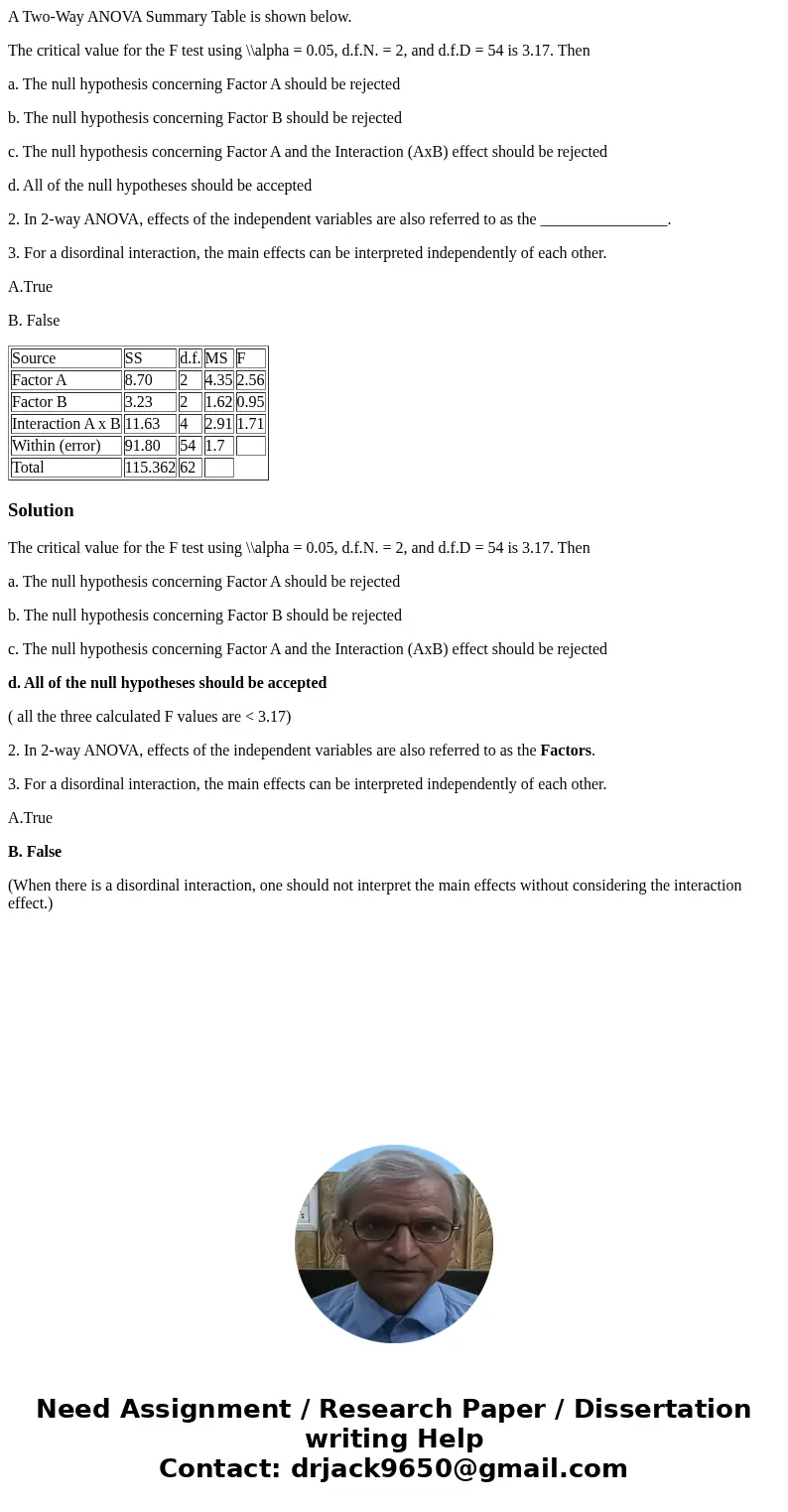A TwoWay ANOVA Summary Table is shown below The critical val
A Two-Way ANOVA Summary Table is shown below.
The critical value for the F test using \\alpha = 0.05, d.f.N. = 2, and d.f.D = 54 is 3.17. Then
a. The null hypothesis concerning Factor A should be rejected
b. The null hypothesis concerning Factor B should be rejected
c. The null hypothesis concerning Factor A and the Interaction (AxB) effect should be rejected
d. All of the null hypotheses should be accepted
2. In 2-way ANOVA, effects of the independent variables are also referred to as the ________________.
3. For a disordinal interaction, the main effects can be interpreted independently of each other.
A.True
B. False
| Source | SS | d.f. | MS | F |
| Factor A | 8.70 | 2 | 4.35 | 2.56 |
| Factor B | 3.23 | 2 | 1.62 | 0.95 |
| Interaction A x B | 11.63 | 4 | 2.91 | 1.71 |
| Within (error) | 91.80 | 54 | 1.7 | |
| Total | 115.362 | 62 |
Solution
The critical value for the F test using \\alpha = 0.05, d.f.N. = 2, and d.f.D = 54 is 3.17. Then
a. The null hypothesis concerning Factor A should be rejected
b. The null hypothesis concerning Factor B should be rejected
c. The null hypothesis concerning Factor A and the Interaction (AxB) effect should be rejected
d. All of the null hypotheses should be accepted
( all the three calculated F values are < 3.17)
2. In 2-way ANOVA, effects of the independent variables are also referred to as the Factors.
3. For a disordinal interaction, the main effects can be interpreted independently of each other.
A.True
B. False
(When there is a disordinal interaction, one should not interpret the main effects without considering the interaction effect.)

 Homework Sourse
Homework Sourse